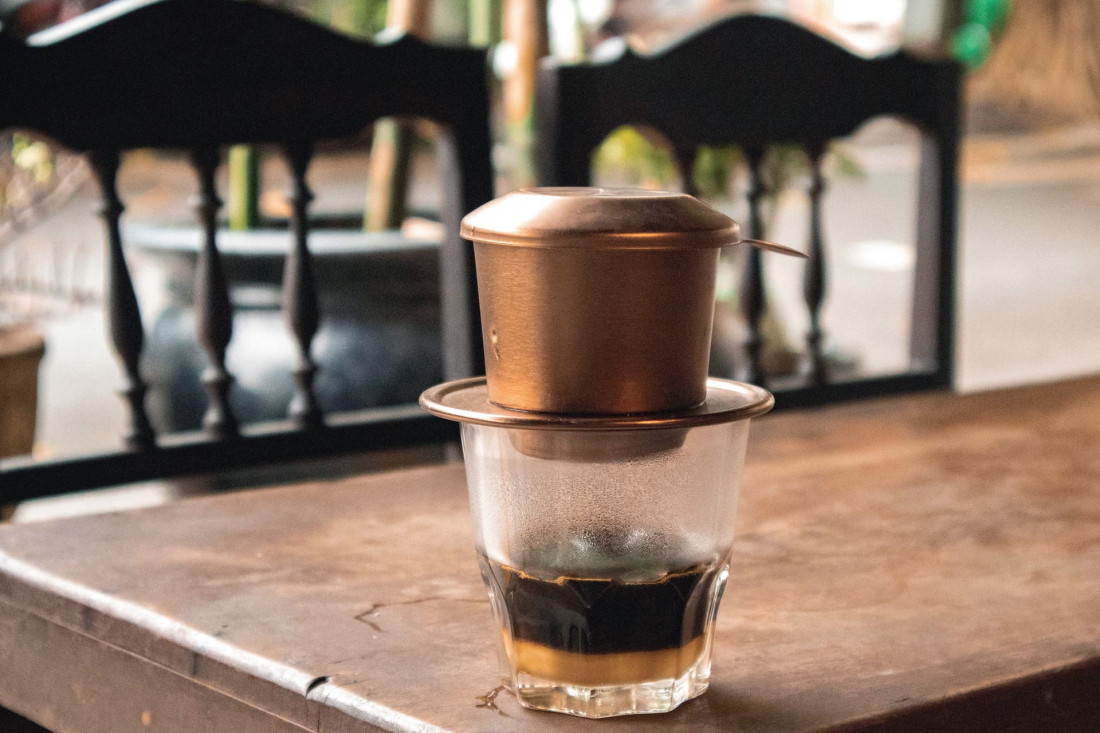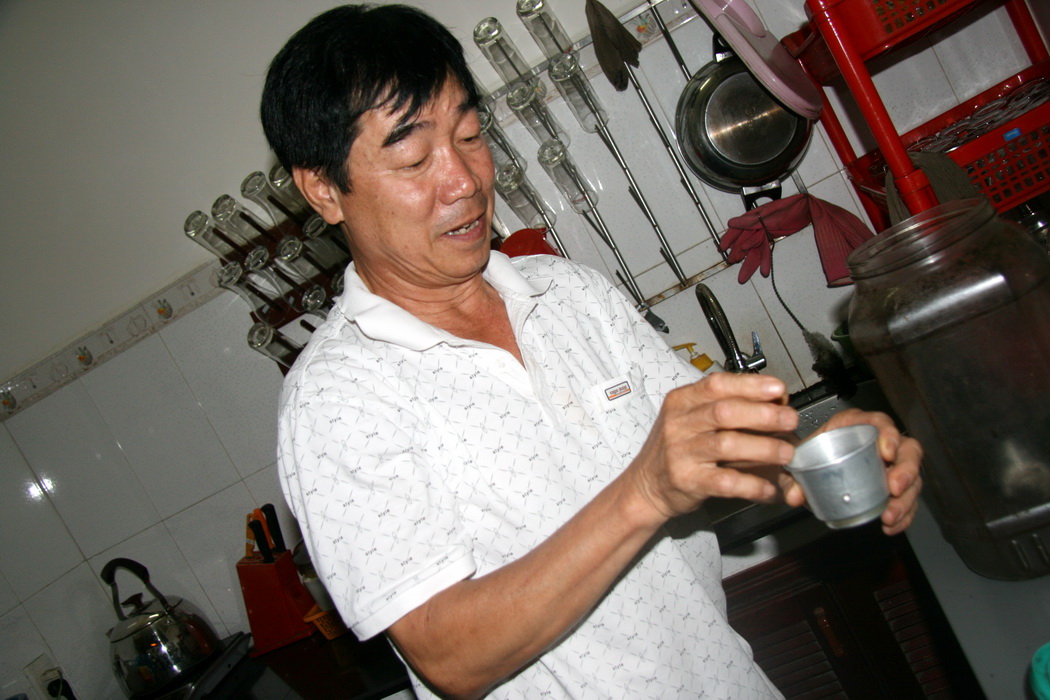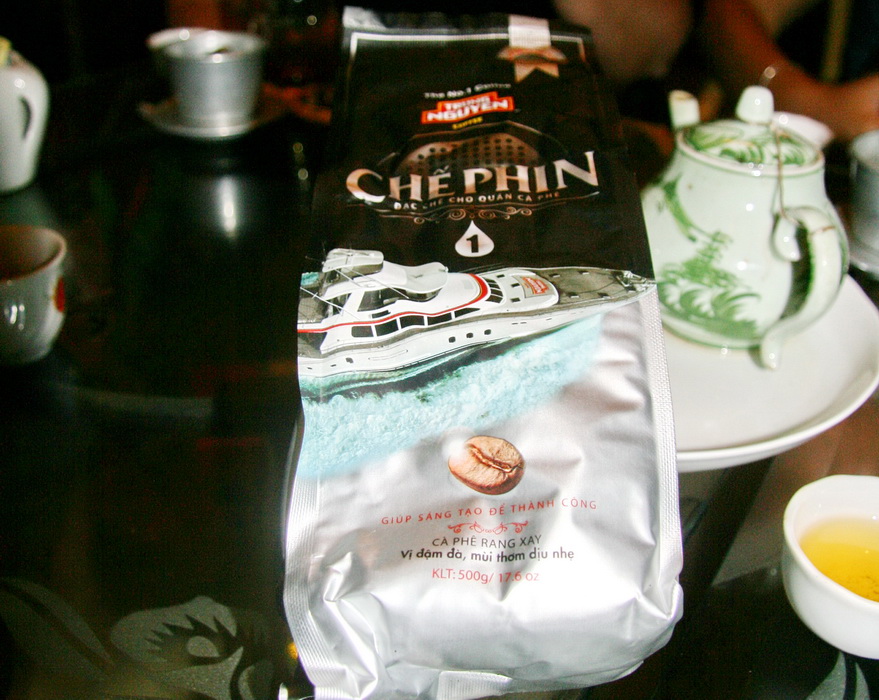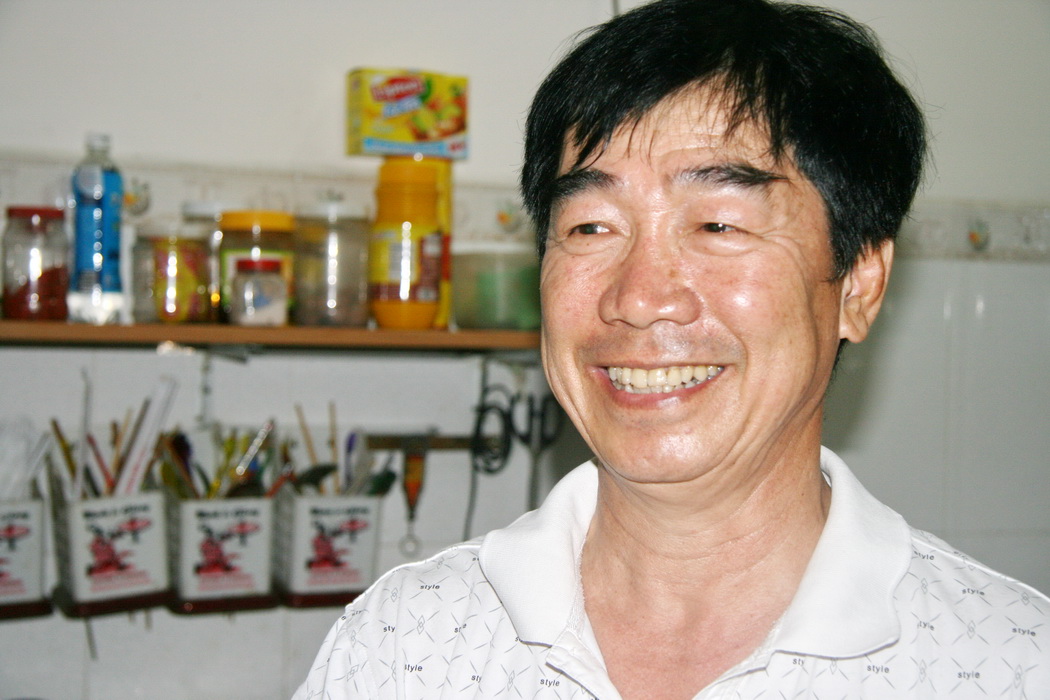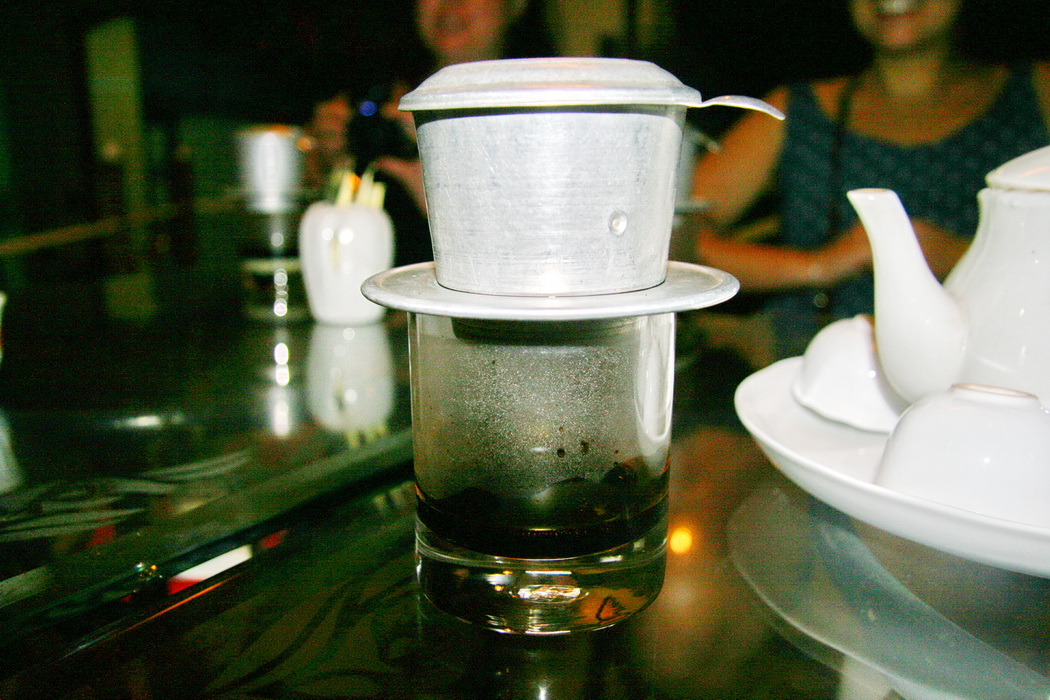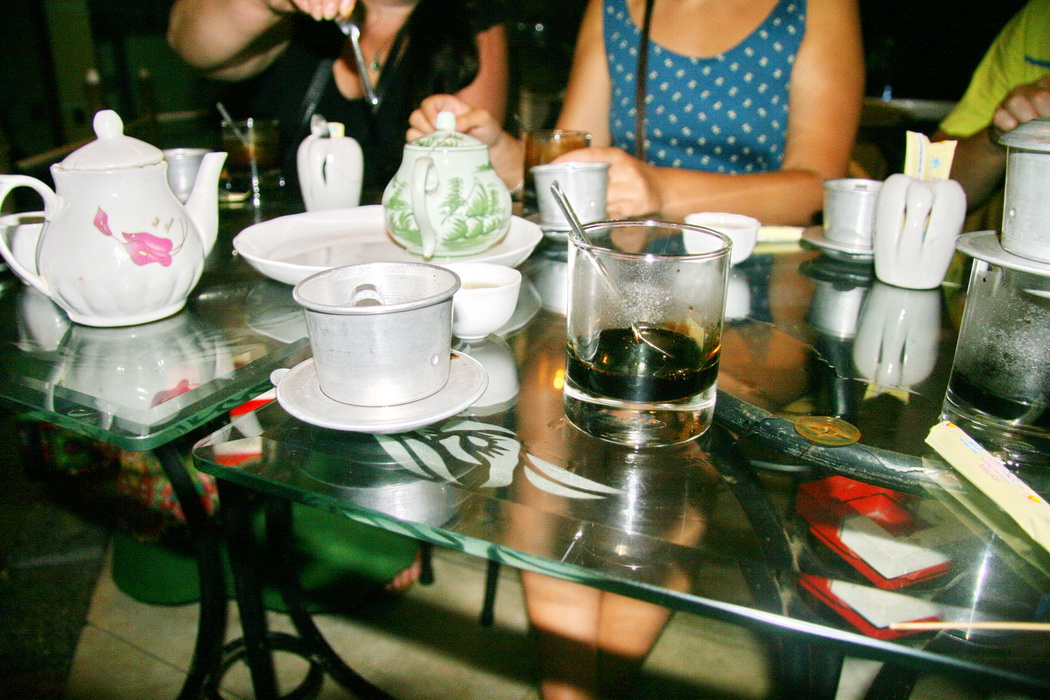My first cup was on a noisy sidewalk in Nha Trang, under a lazy ceiling fan and the hum of passing scooters. I was handed a glass of tea (standard), and next to it — a small metal filter slowly dripping black coffee into condensed milk at the bottom of the cup. It looked simple. It tasted like magic. Deep, rich, sweet, and slightly bitter — like chocolate, molasses, and a late-night conversation all in one sip.
The Ritual
Vietnamese coffee is made in a phin — a tiny metal filter that rests directly on your cup. No fancy machines. No barista theatrics. Just gravity, hot water, and time. And somehow, it works.
Locals drink it in two classic ways:
- Cà phê đen đá – black, over ice, no sugar. Bold and refreshing.
- Cà phê sữa đá – the same, but with generous sweetened condensed milk. Almost like dessert, but it wakes you up.
Everyone sips it slowly. You don’t scroll. You watch it drip.
The Taste
Most cafés use robusta beans, grown in Vietnam’s Central Highlands. They’re strong, earthy, slightly bitter — perfect with sweet milk. The result is smoother than you’d expect. And if you’re wondering: yes, you can pour it over ice. It’s a tropical country, after all.
The most popular brand is Trung Nguyên — especially their Chế Phin line. You’ll see them in every supermarket. But the flavor comes less from branding, more from how it’s brewed.
How to Make Vietnamese Coffee at Home
Want to bring the taste home? It’s easier than it looks:
- Add condensed milk to a glass
- Place the phin on top
- Add coffee (medium grind), press it down gently
- Pour a bit of boiling water, wait 15 seconds
- Fill the filter with more water, cover it, and let it drip
- Wait 5–7 minutes. Stir. Sip. Smile.
Some serve it while it’s still dripping — a reminder to slow down and let the coffee do its thing.
- A Fun Fact About Vietnamese Coffee: Vietnam is the world’s second-largest coffee exporter — and the number one producer of robusta. In the 2021–22 season alone, the country produced over 30 million 60-kilogram bags. And somehow, each cup still feels handmade.
If you’re heading to Vietnam, try it everywhere — street corners, hipster cafés, train stations, family-run diners. And if you fall for it (you will), take home a phin filter or two. They weigh nothing, cost next to nothing, and turn even your rushed weekday into something a little more mindful.






